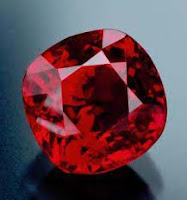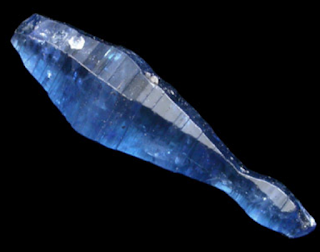Gems of sri lanka
*The Gem industry in Sri Lanka (also known as Ceylon, Serendib, etc..) has been in existence for over 2500 years. Some of the rarest of gem stones of exquisite beauty have taken pride of place, in the Crown jewels of Kings and Queens from time of Great Roamn Emperors.
Highlights of Gems
Sapphire
• Description
Sapphire is an aluminum oxide. Its colour varies from very light to dark blue to violetish-blue, bluish-green, yellow, slightly reddish-orange, brown, nearly opaque black, colourless, pink, violet and the pinkish-orange padparadscha (lotus flower).
Sapphire
Ceylon Sapphires• The Ceylon Blue Sapphire is known for its beauty ? possessing the glorious cornflower blue shade ? as well as for being one of the few sapphires in the world that can be sold as a completely natural stone without heat treatment. The blues aside, Ceylon sapphires also come in beautiful hues including pink, yellow, orange, green, purple, lavender and of course, the inimitable padparadscha sapphire ? named after the lotus flower. All these highly marketable qualities of Ceylon sapphire has created brand recognition world wide – a brand not created by the producers of the stone, but by the sellers and consumers.
Sapphires that show a star-like light effect are called star sapphires; the most famous star sapphire from
Sri Lanka is displayed in the Museum of Natural History in New York. Star sapphires or star rubies display a star-like marking and this effect, commonly known as asterism, occurs when light falls on the cut stone, cut in the cabochon form, and three rays appear giving a six-point star. However, stones with six rays have also been known to occur.
Lastly, there is milky corundum, a white opaque form of corundum also called geuda, which for many years was regarded as useless and discarded, often ending up lining fish tanks in some gemstone merchant’s house. This happened until dealers in Thailand learned to heat-treat geudas to change the colour of the stone from an unattractive cloudy grey-white to a bright, sparkling blue. They completed the work nature began and ended up with a blue sapphire – of much greater value than a useless pebble. The colour of heat-treated blue sapphires are stable and the chemical composition of the stone is that of a sapphire, although prices are lower than for a similar quality stone with natural colour.
Ceylon Sapphire
RubyDescription
Ruby is an aluminum oxide, a variety of corundum; it occurs in medium to dark tones of red and violetish-red to brownish-red.
Ruby
Alexandrite• Description
• Alexandrite is a variety of chrysoberyl, which ideally shows a distinct colour change from green in fluorescent light or daylight to red in incandescent light.
Alexandrite
Star Stones• Description
• Star stones of the corundum family are either star sapphires or rubies. When light falls on these stones, a star effect is visible (known as asterism).
Sri Lanka is the best known source for star sapphires and star rubies. Star sapphires range in colour from grey to bluish-grey and from medium blue to medium dark blue. The very slightly purplish medium dark blue is the best colour grade for star sapphires. Star rubies range from light pink-red to purple-red through deep purple-red. The intense red star rubies are extremely rare. A good quality star stone should have a high degree of transparency and a well defined star with no weak or missing rays. It should be reasonably clean and in the face-up position, no distracting inclusions or cracks should be seen. There should be no excess weight at the bottom of the stone.
Star sapphires and rubies are hard stones (9 on the Moh?s scale), which can take a high degree of polish and retain the shinefor a long time.
Star Stones
The special optical phenomenon of a well-defined six-ray star is a fascinating sight. The wearable qualities of the star stones make them suitable for men’s rings.Chrysoberyl
• Description
• The species name chrysoberyl is given to a transparent, faceted gemstone that does not show a colour change between daylight and artificial light (the chrysoberyl which shows a colour change is called alexandrite). The ideal colours of chrysoberyl are green and yellowish-green In addition, due to strong dichroism, one may see an attractive bi-coloured chrysoberyl occasionally. Hardness is 8.5 on the Moh’s scale. The high refractive index of the stone makes it very lively when properly cut and polished.
Chrysoberyl
Cat’s Eye
• Description
• A cat’s eye like effect, known as ‘chatoyancy’, appears to move on this stone’s surface. Cat’s eye is a gem variety of chrysoberyl. Hardness: 8.5 on the Mohs’ scale.
There are generally two varieties of cat’s eye the alexandrite cat?s-eye and the chrysoberyl cat’s-eye, which is very popular in the Far East, particularly in Japan. The ideal colours of the chrysoberyl cat’s-eye are yellowish-brown, which is called the honey colour, and the yellow-green, which is called the apple green colour. A very good cat’s eye, apart from being of ideal colour, should have a high degree of transparency and a well-defined unbroken ray. It should be free from any distracting inclusions visible to the unaided eye. The chrysoberyl cat’s-eye is one of the most beautiful gemstones because of the chatoyancy or the eye effect.
A translucent variety of chrysoberyl (beryllium aluminum oxide) which exhibits a silvery white line across the stone. This moves as the stone, the light source or the observer moves and may appear to open and close like an eye.
The finest quality has a sharp eye that appears to open and close as the stone is rotated, and exhibits a strong “milk and honey” effect (stone on one side of the eye appears lighter than the other). These colours switch as the stone or [light source is moved. The most highly prized body colours are greenish-yellow and brownish-yellow (honey colour).
Cat’s Eye
Quartz
• Description
• Quartz is the most common mineral on the face of the Earth. Gem varieties include amethyst (purple), citrine (yellow), milky quartz (cloudy, white variety), rock crystal (clear variety), rose quartz (pink to reddish-pink variety), and smokey quartz (brown to grey variety).
Gem varieties of quartz include: citrine, amethyst, rock crystal, rose quartz, and smokey quartz. There are also varieties of Quartz cat’s eye.
Colours: citrine (yellow); amethyst (purple); rock crystal (colourless); rose quartz (pink); and smokey quartz (purplish-brown).
Quartz
Amethyst
• Description
• A variety of quartz, silicon dioxide, which appears to be dark purple in transparent light. This should be cut so that the long portion of the cabochon is 90 degrees to the direction of the needles.
Amethyst
Citrine
• Description
• A transparent variety of quartz, silicon dioxide, occurring in yellow to red-orange to orange-brown. The name is derived from citron, which is French for lemon.
Citrine
Aquamarine
• Description
• Aquamarine is a blue to greenish-blue or bluish-green variety of beryl.
Aquamarine
Garnet
• Description
• A group of gemstones occurring in every colour but blue. One of earth’s most common minerals, though only a small portion is considered gem quality.
Garnet
Tourmaline
• Description
• Tourmaline is a group of minerals comprised of a complex boron-aluminum silicate with one or more of the following: magnesium, sodium, lithium, iron, potassium or other metals. It appears in light from dark red to purple as well as brownish variations of these hues – light to dark green, yellowish-green, greenish-yellow, brownish-orange. It also grows bi-coloured.
Tourmaline
Spinel
• Description
• A magnesium aluminum oxide which occurs in all colours, ruby-red being the most popular. Most colours are greyed out. Gahno-spinel is a dark blue or greenish-blue spinel with high zinc content.
Spinel
Topaz
• Description
• Topaz is a fluosilicate of aluminum, occurring in transparent yellow, yellow-brown, orange-brown, light to almost medium red, very light to light blue, very light green and violet colours.
Topaz
Moonstone
• Description
• Moonstones are usually colourless to white, semi-transparent to translucent, and characterised by a glowing light effect known as adularescence, the visibility of which is confined to a restricted angle of view. The most valuable of the feldspar gems.
Moonstone
Zircon
• Description
• Zircon is a zirconium silicate, occurring in colourless, light blue, brownish-orange, yellow, yellowish-green, brownish-green, dark red or light red-violet. Blue is the most valuable. This stone is usually heat-treated.
Zircon
Peridot
• Description
• Peridot is a silicate of magnesium and iron, occurring in yellowish-green, green, greenish-yellow, brownish-green and brown (all transparent).
Peridot
...................................................................................................................................................................
More Posts




















Do you know
ReplyDeleteGems of Sri Lanka have a bright and colourful history with some of its more renowned finds taking pride of place in the most prestigious of settings. It is believed the St. Edward’s Sapphire atop the Royal crown, the Blue Sapphire at the heart of the engagement ring from Prince William to Kate Middleton as well as the blue Sapphire ring worn by the late Princess Diana are of Sri Lankan origins. And we haven’t even begun to talk about our rubies and cats eyes!